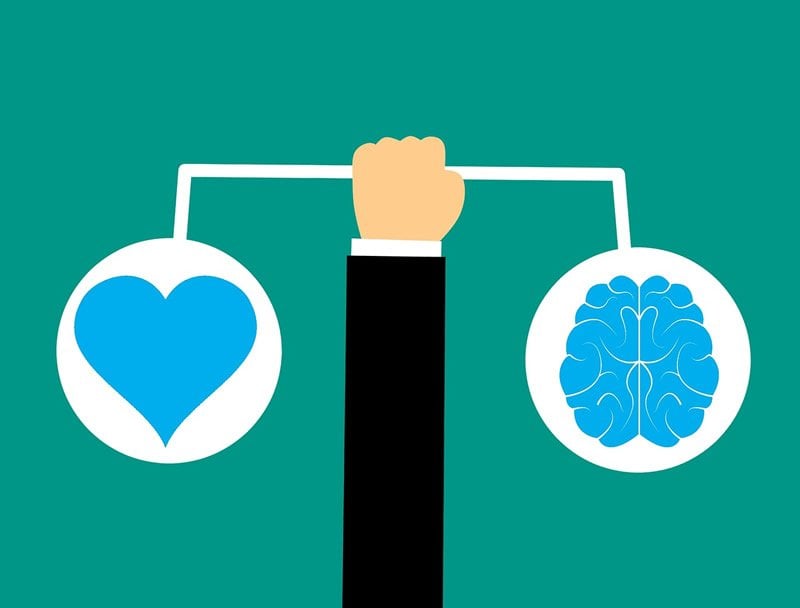Summary: Heart insufficiency has a negative impact on gray matter in the brain. Weak heart function was linked to decreased gray matter in areas of the brain associated with memory and learning, including the hippocampus and parietal medial cortex. This may increase the risk of Alzheimer’s disease.
Source: Max Planck Institute
If the heart pumps too little blood into the body, the brain is usually not adequately supplied with oxygen. Until now, however, it was unclear how this affects brain structure. Researchers at the Max Planck Institute for Human Cognitive and Brain Sciences together with colleagues from the Leipzig Heart Clinic, have now figured out that the grey matter also suffers from a weak heart.
About 1,8 billion people in Germany suffer from heart insufficiency. This does not just influence the patient’s performance – they are exhausted more quickly and complain about breathlessness when under stress. It also has an impact on their brain. Scientists at the Max Planck Institute for Human Cognitive and Brain Sciences have now shown that the density of grey matter decreases. After a heart attack, the damage is particularly extensive.
“The weaker the heart, the lower the density of the grey matter“, says Matthias Schroeter, leader of the research group Cognitive Neuropsychiatry at the Max Planck Institute in Leipzig, about the central result of the current study. The whole frontal and parietal medial cortex and the so-called precuneus within the cortex, as well as the hippocampus, are particularly affected. These regions are involved in attention and memory. “A decline of grey matter in these areas could make it more likely that someone would develop Alzheimer’s disease”, Schroeter says.

The scientists investigated the relationship between the grey matter and heart function of 80 patients at the Leipzig Heart Clinic with the help of Magnetic Resonance Imaging (MRI) scans. They examined the amount of blood that is ejected by each heart beat and the concentration of a certain hormone in the blood vessels that is known as a marker for heart insufficiency. Thereby they found a significant correlation between the level of this insufficiency and reduction in grey matter.
Grey matter processes higher mental capabilities
The grey matter of the brain is mainly composed of the neurons’ cell bodies. The neurons’ long ends, in contrast, form the white matter. The majority of the grey matter forms the cerebral cortex, the highly convoluted, three to five millimetre layer that sheathes the brain. Here, the higher mental capabilities of humans are processed, ranging from language to creativity.
“In the case of heart failure it’s important to also take into account that the brain structure can be damaged”, Schroeter explains. Previous studies had shown what best counteracts the breakdown, for example sports and social activities. “Of course, it’s also crucial to treat the heart insufficiency.” That means addressing the causes such as smoking, diabetes, or obesity.
Source:
Max Planck Institute
Media Contacts:
Verena Müller – Max Planck Institute
Image Source:
The image is in the public domain.
Original Research: Open access
“Brain change with heart failure: Cardiac biomarker alterations and gray matter decline.”. Karsten Mueller, F. Thiel , F. Beutner, A. Teren, Tommaso Ballarini, Harald E. Möller, Kristin Ihle, Arno Villringer, and Matthias L. Schroeter.
Circulation Research doi:10.1161/CIRCRESAHA.119.315813.
Abstract
Brain change with heart failure: Cardiac biomarker alterations and gray matter decline.
Rationale: Heart failure (HF) following heart damage leads to a decreased blood flow due to a reduced pump efficiency of the heart muscle. A consequence can be insufficient oxygen supply to the organism including the brain. While HF clearly shows neurological symptoms, such as fatigue, nausea and dizziness, the implications for brain structure are not well understood. Few studies show regional gray matter decrease related to HF, however, the underlying mechanisms leading to the observed brain changes remain unclear.
Objective: To study the relationship between impaired heart function, hampered blood circulation and structural brain change in a case-control study.
Methods and Results: Within a group of 80 patients of the Leipzig Heart Center, we investigated a potential correlation between HF biomarkers and the brain’s gray matter density (GMD) obtained by magnetic resonance imaging. We observed a significant positive correlation between cardiac ejection fraction and GMD across the whole frontal and parietal medial cortex reflecting the consequence of HF onto the brain’s gray matter. Moreover, we also obtained a relationship between GMD and the N-terminal prohormone of brain natriuretic peptide (NT-proBNP) − a biomarker that is used for screening, diagnosis and prognosis of HF. Here we found a significant negative correlation between NT-proBNP and GMD in the medial and posterior cingulate cortex but also in precuneus and hippocampus, which are key regions implicated in structural brain changes in dementia.
Conclusions: We obtained significant correlations between brain structure and markers of heart failure including EF and NT-proBNP. A diminished GMD was found with decreased EF and increased NT-proBNP in wide brain regions including the whole frontomedian cortex as well as hippocampus and precuneus. Our observations might reflect structural brain damage in areas that are related to cognition, however, whether these structural changes facilitate the development of cognitive alterations has to be proven by further longitudinal studies.






